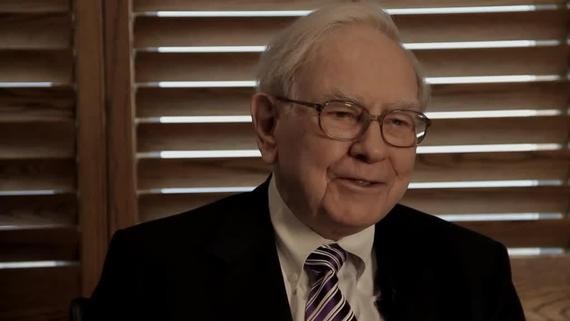Value Investing Legends Benjamin Graham
Post on: 16 Март, 2015 No Comment

Benjamin Graham is known as the Father of Value Investing. He has mentored many value investing legends that went on to extraordinary success including Walter Schloss. John Templeton and Warren Buffett.
Below we provide a synopsis of his work along with his guidelines to finding value stocks to invest in that will outperform market averages.
The Birth of Value Investing
After nearly being wiped out by the stock market crash of 1929, Benjamin Graham decided to transform his investing approach. Graham wrote two books about his value investing approach. “Security Analysis ” was written in 1934 following the great depression and is still considered the value investing bible. His follow up book, “The Intelligent Investor” was published in 1947.
He started by eliminating the behavioral aspects of investing which he believed was the number one reason investors underperformed the market averages.
Benjamin Graham believed that the behavioral aspect of investing was the number one reason investors underperformed indexes such as the S&P 500. This was particularly true during market highs and lows when greed and fear dictate market moves. Contemporary studies looking at the returns of individual investors bear this out.
During bull markets investors have a tendency to overestimate the growth prospects of companies. Thus they buy at prices higher than the company is actually worth. This leads to market bubbles that eventually collapse. Recent examples are the dot com and real estate bubbles.
During bear markets investors do the opposite. They underestimate the company’s growth prospects and miss out on their eventually recovery.
Benjamin Graham created a fictional character named Mr. Market to help people understand how to invest in the market. Graham warned investors not to fall under the spell of Mr. Market. If they did it would be disastrous to their pocket books. Here’s the story of Mr. Market.
Mr. Market (the stock market) is to be looked upon as your business partner. Each day he comes to you with a price that you can either buy his interest in the business for or you can sell him yours. You can choose to either ignore Mr. Market or take him up on his offer. Mr. Market doesn’t mind being ignored but he is bi-polar.
When the market (business) is up and the future looks brightest Mr. Market becomes euphoric. During these times he demands a high price for his piece of the business because he’s deftly afraid of missing out on future gains. When the market’s (business) down and Mr. Market sees nothing but trouble ahead, he becomes depressed. During these times he’ll offer you a very low price to buy his business because he’s terrified you’ll sell your part of the business to him.
Graham said there’s one rule you must follow when dealing with Mr. Market. If you fail to heed this rule it will be disastrous to your financial well-being. The rule is this: never fall under Mr. Market’s hypnotic influence. If you buy his piece of the business when he is euphoric and selling his business at a high price and sell him your business when he is depressed and he offers you a low price for your business, your pocketbook will suffer greatly and Mr. Market’s pocketbook will swell with profits.
Remember; Mr. Market is simply there to serve you, not to guide you on when to invest. It is his pocketbook, not his foolish wisdom that you will find useful. You must learn to take advantage of Mr. Market’s bi-polar nature if you are to achieve to success in the Stock Market. Learn to buy low when he is depressed and sell high when he is overly optimistic about the future prospects for business growth.
To counteract Mr. Market’s intoxicating emotional state, Benjamin Graham suggests that you first determine the intrinsic value of a company that is independent of the current market evaluation. This reduces your risk of misjudgment. Then you limit your purchase of stocks to only those that are selling near or below their intrinsic value regardless of Mr. Markets outlook.
Determining Intrinsic Value
Graham determined the intrinsic value of a company by focusing on the balance sheet. He used the most conservative of assumptions starting with Net Asset Value (i.e. total assets minus total liabilities).
He also did more sophisticated analysis by applying discount percentages to various assets (cash and it’s equivalent would be given full value) and subtracting full value for the liabilities from the adjusted total assets to determine a liquidation price.
Benjamin Graham provides recommended discounts in his book but admits that it requires considerable judgment because discounts vary from company to company. While Graham put more emphasis on evaluating tangible assets to determine a buy price, he also took into consideration other factors such as including earnings, dividends, financial strength and stability.
Only when a company was priced below the determined intrinsic value would he buy. The lower the price to intrinsic value, the higher the margin of safety and thus the higher the probability of being right and beating the stock market averages.
Benjamin Graham went one step further saying investors should look at themselves as owners of the business. Their goal should be to buy a sound and expanding business at a rational price. This concept would carry over to Warren Buffet.
After getting burned by the stock market crash Benjamin Graham created a safer way of investing. It’s been estimated that he was able to achieve up to 20% annual returns by only buying stocks that were undervalued and provided a margin of safety to offset any miscalculations or wrong assumptions on his part.
Many other investment legends took Benjamin Graham’s foundation, adapted it to their personal strengths and went on to achieve legendary status as investors, Warren Buffet being his most famous student.

Key Investing Concepts of Benjamin Graham;
There are two key ways of evaluating and finding value stocks according to Graham. The first is the price-to-liquidation value. The second is to value the company as a private business transaction and purchasing it at a discount relative to its true value when taking future earnings into consideration.
Investment guru Martin Zweig suggested a maximum price-to-liquidation value of 2.63 as the upper threshold for buying a stock when commenting on Graham’s book, “The Intelligent Investor”.
When valuing a stock as a private business transaction Graham suggested finding stocks that are selling for 50% or less than its indicated value. The indicated value is determined by estimating future earnings while taking into consideration the companies working capital less all debt.
Benjamin Graham guidelines when deciding which stocks to invest in.
The most obvious value stock to buy according to Graham was one selling for less than net working capital alone.
- Avoid small cap stocks. Larger companies have the financial strength and size to survive any future setbacks and tend to rebound in price quicker due to improving profits. Small companies have a greater risk of not being able to sustain themselves during periods of adversity.
- A strong track record of stable earnings over the past 5-10 years preferably without any negative earnings. Earnings should also show a history of growth with the most years recent being the highest.
- The lower the price-to-earnings ratio, the better. A good starting point is companies with price-earnings ratios in the lowest 10% of all stocks. When evaluating cyclical stocks you have to make sure the price is low in comparison to past average earning otherwise you can be fooled by their price-earnings ratio in their good years.
- The current ratio should be a minimum of 1.5 while long-term debt is no higher than 110% of net current assets.
- Graham was most interested in companies that were paying some level of dividends. By requiring that the company paid a dividend he was able to eliminate smaller companies and those that were under financial duress.
- To further mitigate risk Graham suggested holding a diverse portfolio of stocks.
Value investing is not for investors looking to make a quick gain. You have to be patient and wait for the right opportunities. Graham waited for other investors to fall for the traps of Mr. Market. He would then only buy those value stocks that were selling below their intrinsic value due to temporary developments in the market. It allowed him to retire a wealthy individual.














